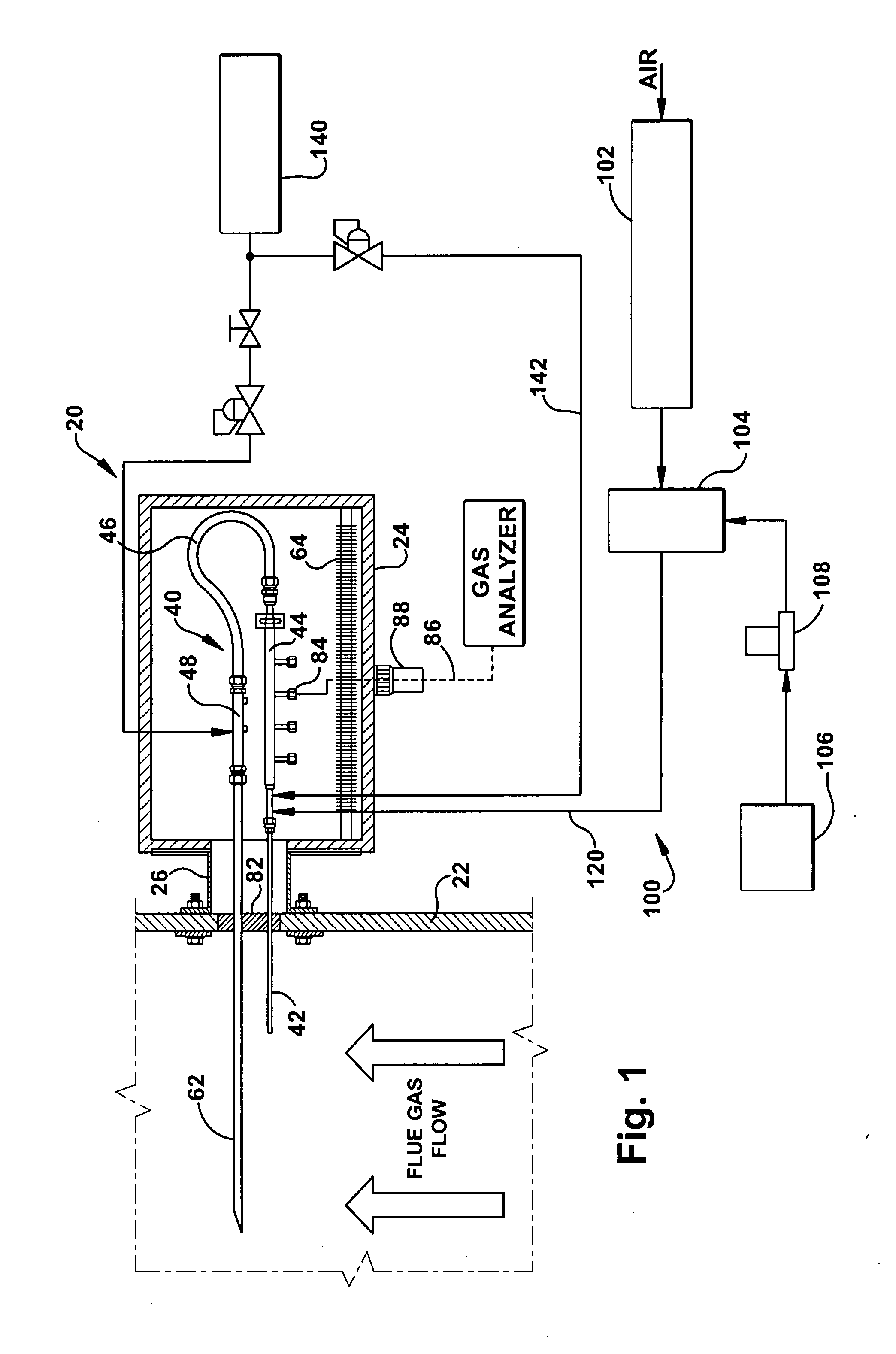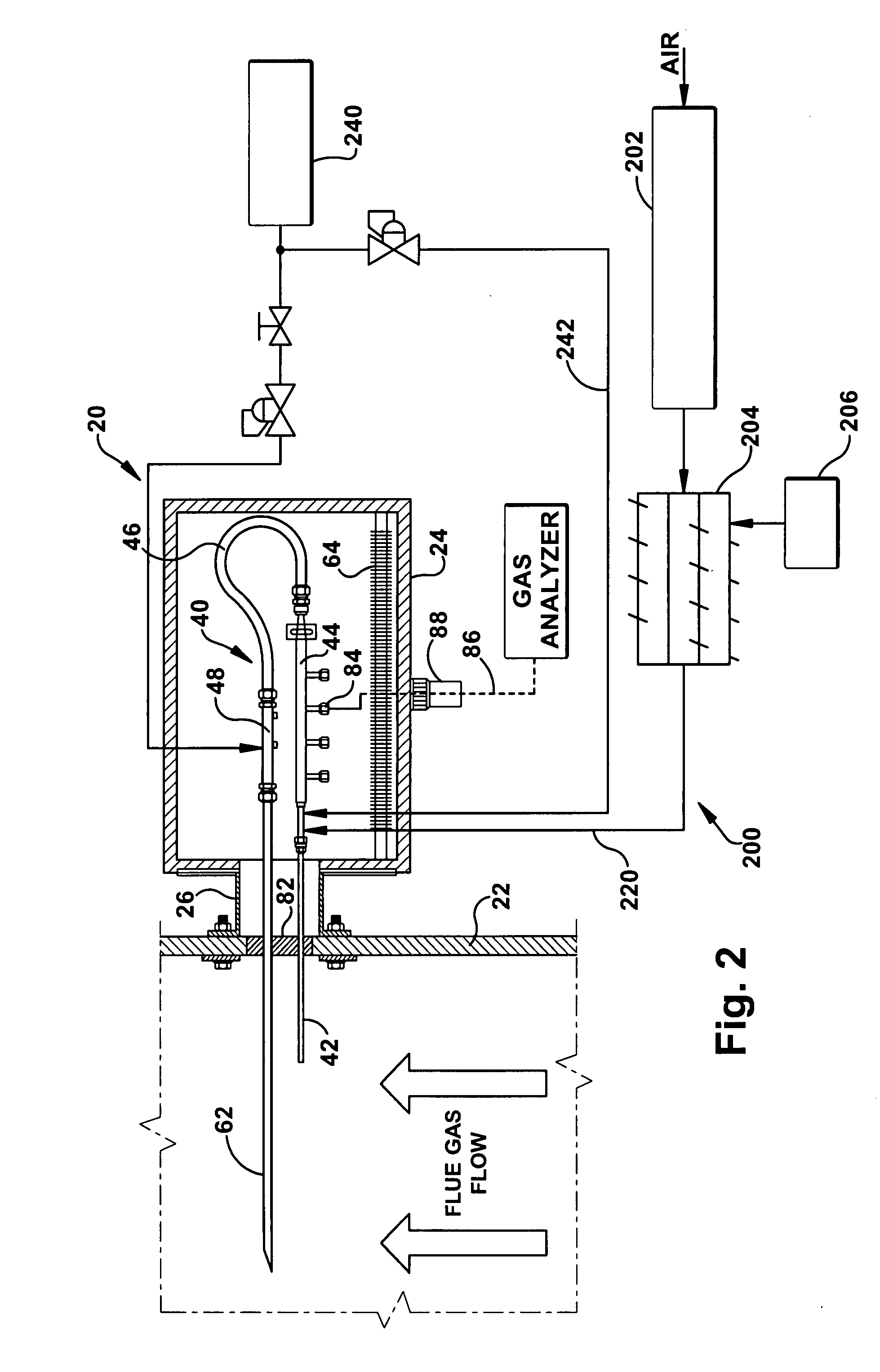Calibration checking for continuous emissions monitoring system
a technology of continuous emissions monitoring and calibration, applied in the calibration of gas analysers, instruments, chemical methods analysis, etc., can solve the problems of gaseous mercury being extremely difficult to handle, adsorption of elemental mercury onto wetted surfaces, and measurement made on samples that are not truly representative, etc., to achieve accurate measurement, accurate measurement, and accurate measurement of calibration material concentration
- Summary
- Abstract
- Description
- Claims
- Application Information
AI Technical Summary
Benefits of technology
Problems solved by technology
Method used
Image
Examples
Embodiment Construction
[0011]A mercury continuous emissions monitoring system (CEMS) normally consists of a tubular probe assembly located in fluid communication with a flue stack for acquiring a gaseous exhaust sample. The CEMS also includes instrumentation located some distance away from the probe assembly to analyze the acquired sample for the presence of mercury. The amount of mercury present in the exhaust gas stream is continuously measured and recorded. Over time, the total amount of mercury emitted is established. Accuracy and precision of the continuous emissions monitoring system are important.
[0012]A critical component of the mercury CEMS is the tubular probe assembly located in fluid communication with the stack for taking the sample. The tubular probe assembly experiences multiple problems. Particulate matter is always present in the in the exhaust stack gas stream and tends to be separated from the exhaust gas and accumulate on surfaces of the tubular probe assembly. Accumulated particulate ...
PUM
 Login to View More
Login to View More Abstract
Description
Claims
Application Information
 Login to View More
Login to View More - R&D
- Intellectual Property
- Life Sciences
- Materials
- Tech Scout
- Unparalleled Data Quality
- Higher Quality Content
- 60% Fewer Hallucinations
Browse by: Latest US Patents, China's latest patents, Technical Efficacy Thesaurus, Application Domain, Technology Topic, Popular Technical Reports.
© 2025 PatSnap. All rights reserved.Legal|Privacy policy|Modern Slavery Act Transparency Statement|Sitemap|About US| Contact US: help@patsnap.com



